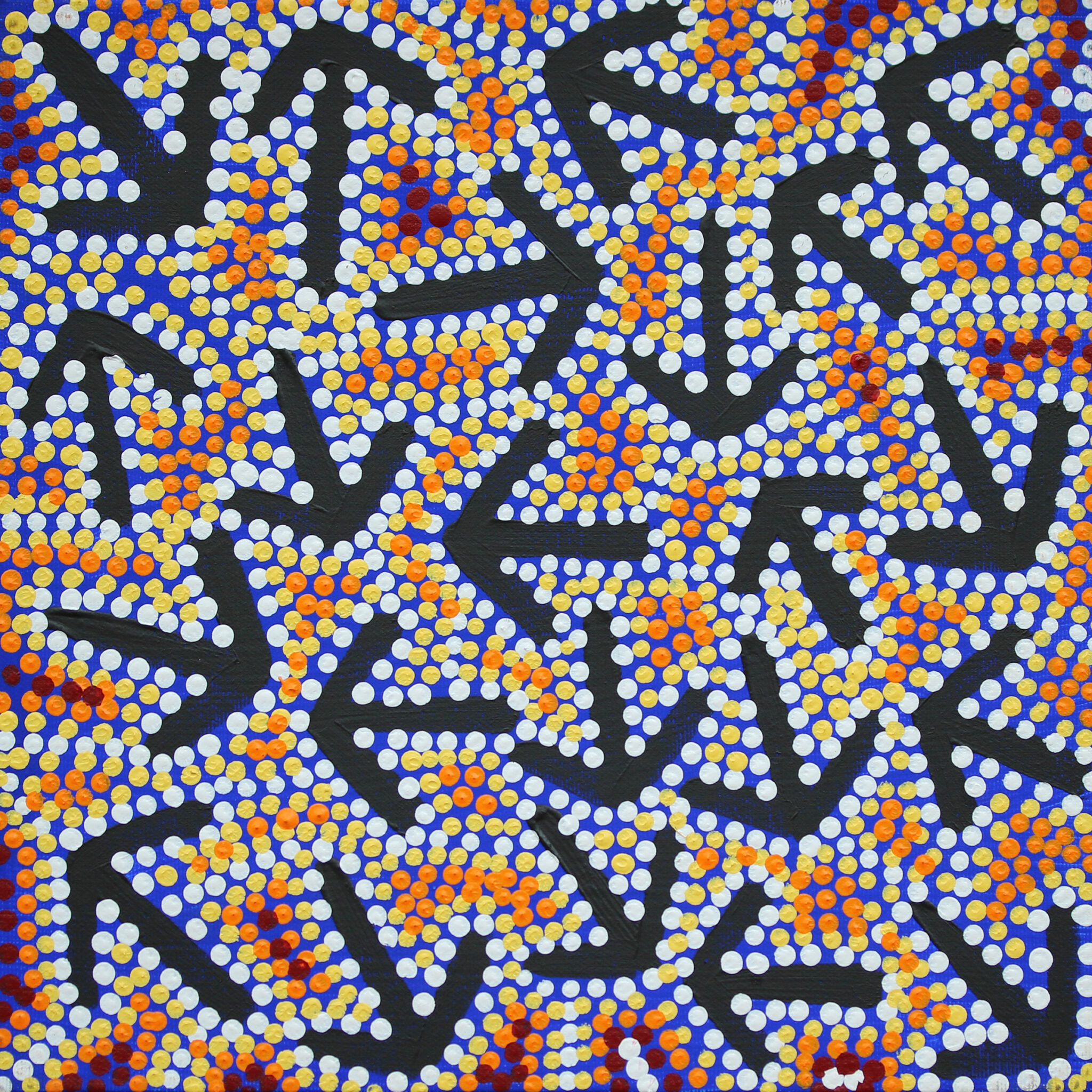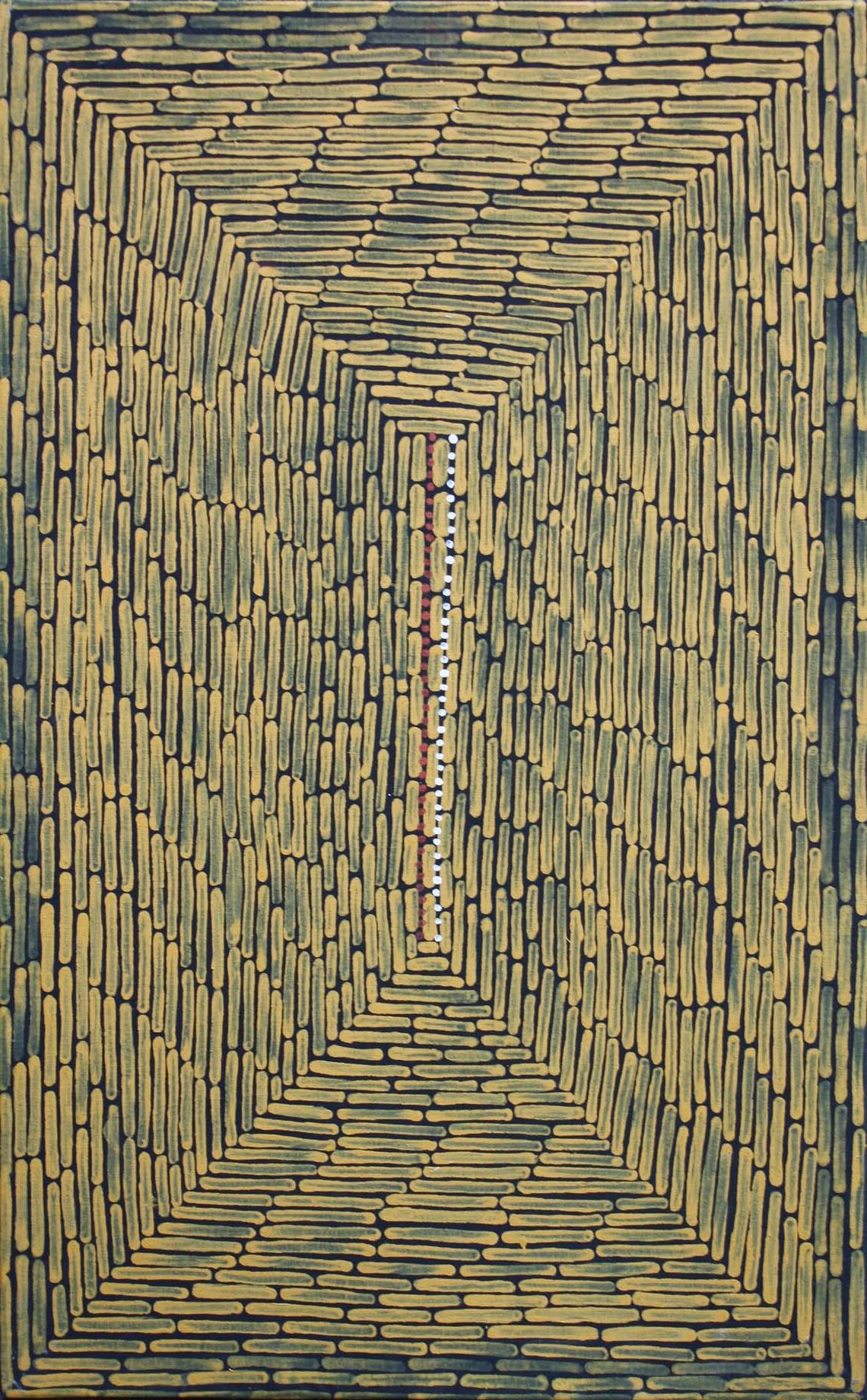Serial:
Size:
$5,250 (tax inc.)
SOLD
The story:
This work is quite significant in that it gives us a glimpse into Tiwi life before European settlement. Tiwi people were nomadic and would move camp as fresh waterholes dried up. In this particular painting, the triangle designs (both the larger dotted triangles, and the solid blocks of ochre colour) represent different geographical points. These points were strategically used when deciding on a new place to set up camp. One man would be assigned the job of going to each of these points to see which water holes contained fresh water and to see if a particular area might be good for hunting. He would climb trees in predetermined locations in order to see if particular areas might be sustainable for the travelling group. The spotter would climb the tree and look for evidence of birds. Where he saw birds he knew there would be water close by. He would also carry a stick long enough to check the depth of any newly discovered water holes. He could determine approximately how many day’s usage they would get from any given waterhole from it’s depth and width. He would break the branches of trees along the correct path to the new camp site so everyone knew which way to go. Justin will sometimes include circles amongst the dots of his paintings, which represent waterholes. In this one though, the spotter has had no luck, and has only found lush tropical jungle. Plenty of hunting, but no water.
Related artwork:
-
29 Hunter St, Hobart 7000,
Tasmania, Australia - +61 3 6236 9200
- euan@artmob.com.au
Cash – locally only – up to $10,000 only. Layby facilities available. Card details can be advised securely using WhatsApp.
© Art Mob Pty Ltd, Aboriginal Fine Art Dealer, all rights reserved.



